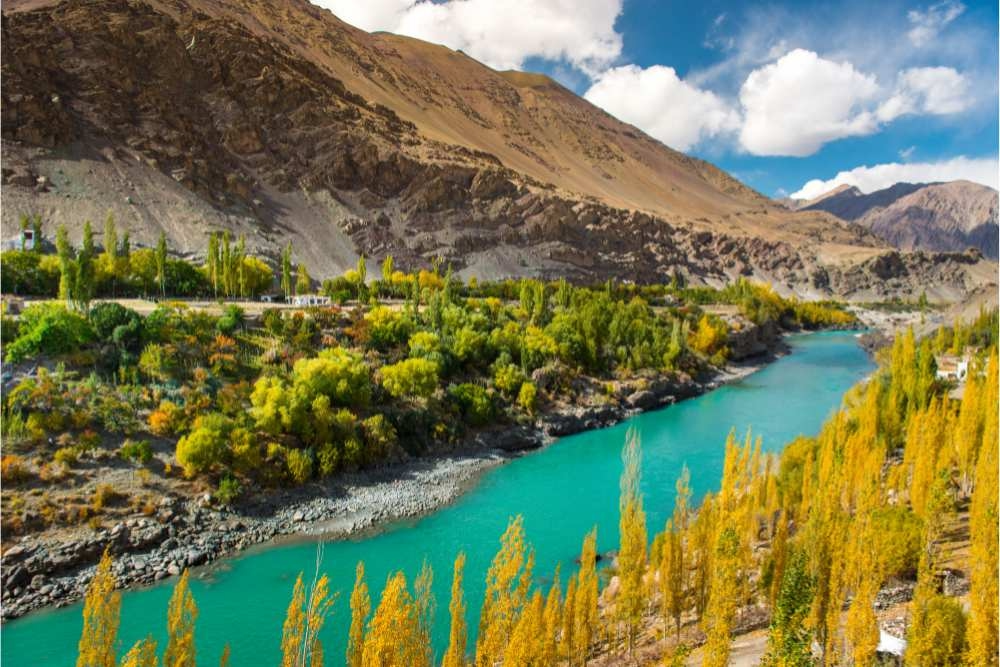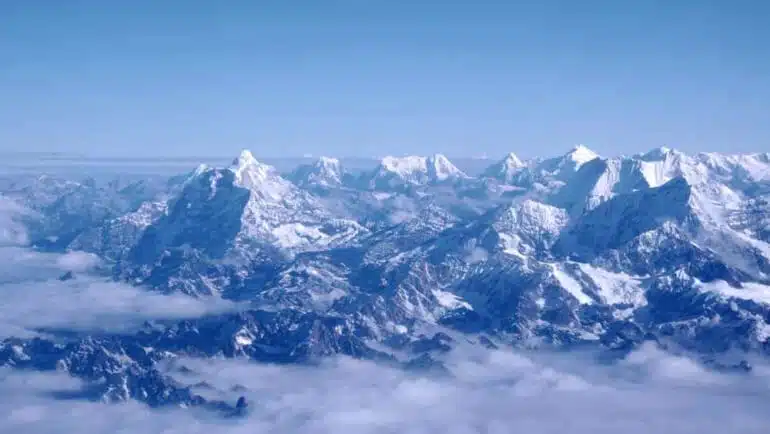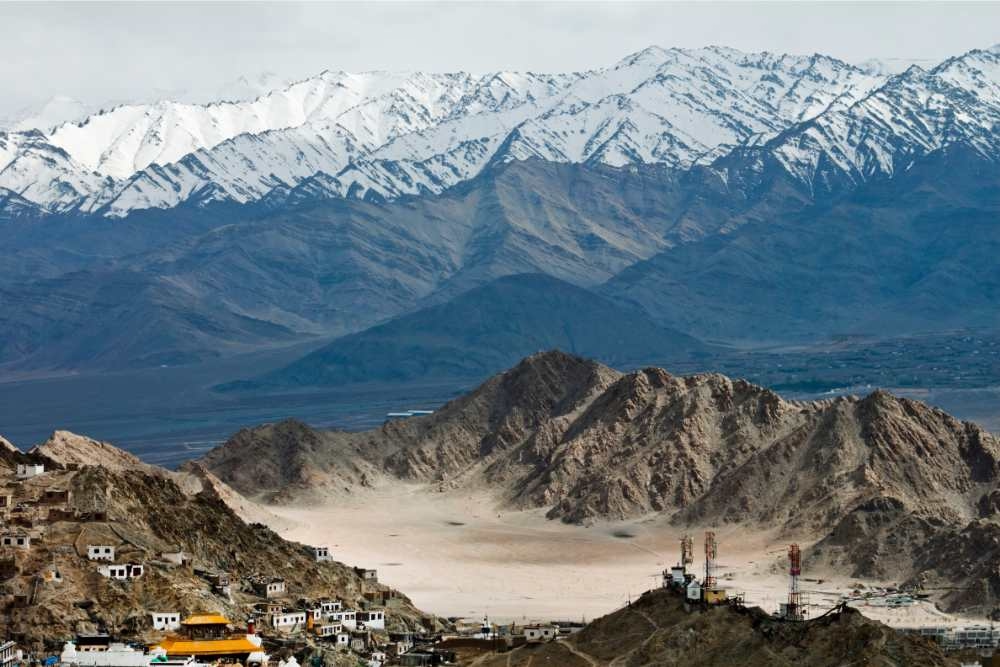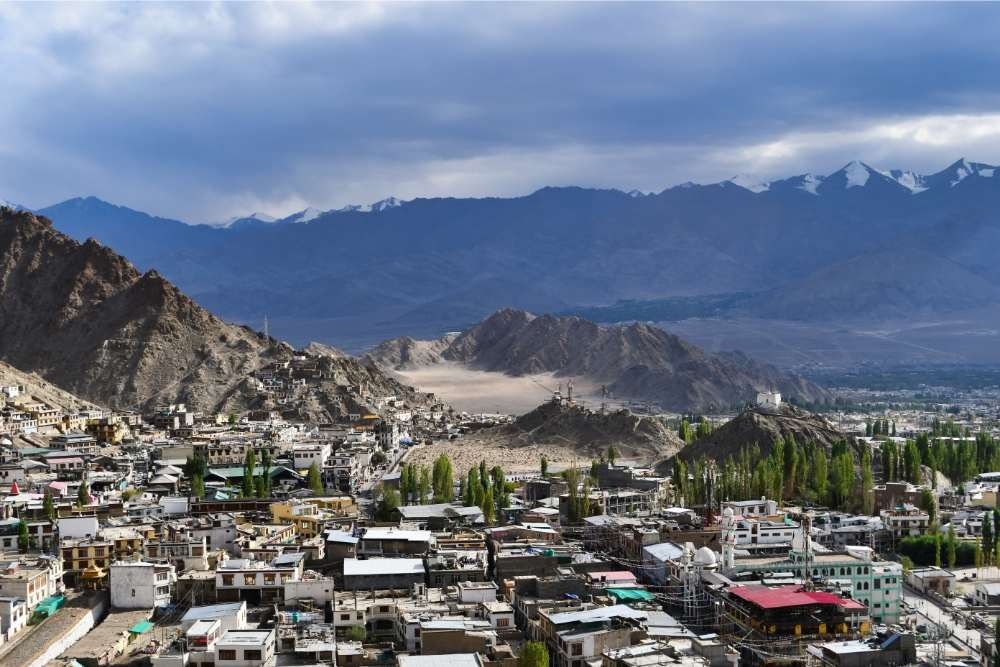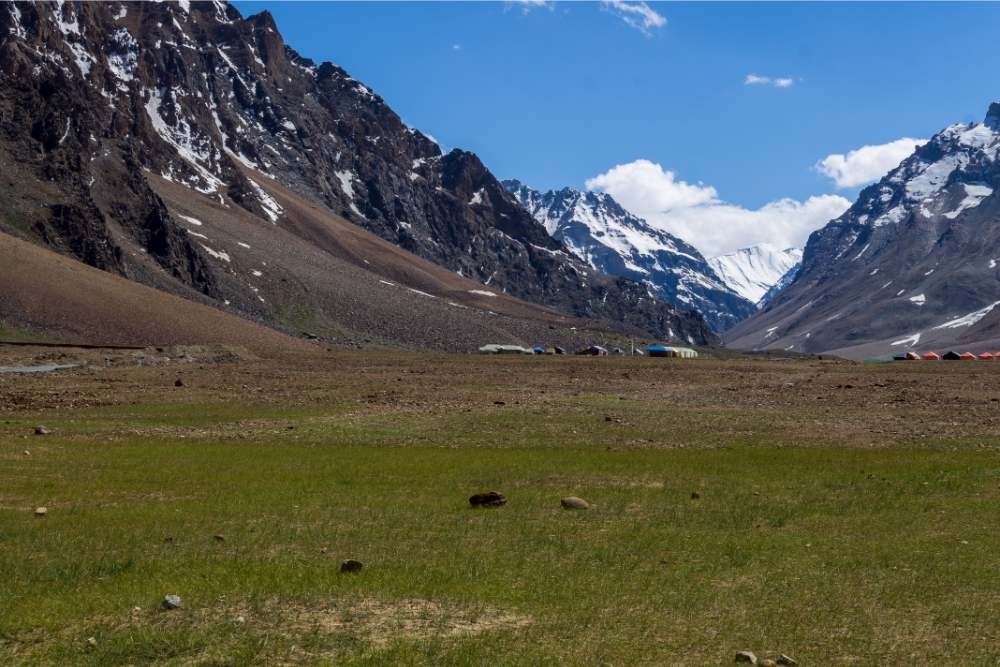Leh, the capital of the mesmerizing region of Ladakh, is a land of surreal beauty, nestled amidst the towering Himalayas. Leh’s stark, rugged terrain, combined with its extreme weather conditions, makes it an intriguing destination for adventure enthusiasts, nature lovers, and spiritual seekers alike. Understanding the weather in Leh is essential for planning your trip, ensuring you experience the best of this remarkable region. This article will deeply dive into Leh’s weather patterns, including the weather forecast for the next 30 days, temperatures, snowfall, and more.
1. Understanding Leh’s Climate
You May Also Like
Leh’s climate is characterized by its extreme conditions due to its high-altitude location in the Himalayan range. The town is over 3,500 meters (11,500 feet) above sea level, significantly affecting its weather patterns. Leh experiences a cold desert climate, with long, harsh winters and short, cool summers. The region receives very little rainfall, and most precipitation comes from snow during the winter months.
The weather in Leh can vary greatly from one season to another, so understanding its temperature ranges, snowfall patterns, and the best times to visit can help you make the most of your trip.
2. Weather in Leh: Seasonal Breakdown
Summer (May to September)
Summers in Leh are short but pleasant, with daytime temperatures ranging from 15°C to 20°C (59°F to 68°F). Nights can get cold, dropping to 5°C to 10°C (41°F to 50°F). This period is the best time to visit Leh, as the weather is perfect for outdoor activities such as trekking, rafting, and sightseeing. The clear skies, crisp mountain air, and stunning landscapes make it a paradise for travelers during these months.
Monsoon (June to September)
While Leh is in the rain shadow of the Himalayas, there may still be occasional monsoon showers between June and September. However, these are often brief and do not significantly affect travel plans. The temperature remains relatively mild during this time, making it a favorable period for outdoor activities and exploring Leh’s famous monasteries and cultural sites.
Autumn (October to November)
Autumn in Leh brings cooler temperatures, with daytime highs dropping to around 10°C to 15°C (50°F to 59°F) and nighttime temperatures plunging to 0°C to -5°C (32°F to 23°F). This season offers breathtaking landscape views, with the fall colors enhancing the region’s beauty. Snowfall becomes possible in higher altitudes, but Leh generally remains snow-free during this period.
Winter (December to February)
Winters in Leh are harsh and unforgiving, with temperatures often plummeting well below freezing. Daytime temperatures range from -5°C to -15°C (23°F to 5°F), while nighttime temperatures can drop to a bone-chilling -20°C to -30°C (-4°F to -22°F). Snowfall is frequent this season, and Leh can be completely covered in snow. Winter trekking and adventure tourism are popular among travelers seeking an off-the-beaten-path experience, although extreme cold and heavy snowfall can make travel difficult during these months.
Spring (March to April)
Spring is a transitional period, with temperatures gradually rising from -5°C to 10°C (23°F to 50°F). The snow begins to melt, and the region starts to thaw, although nights can still be cold. It’s a quieter time to visit Leh, and while some areas may still be inaccessible due to snow, the spring season allows travelers to witness the gradual awakening of nature after a long winter.
3. Leh Temperature: What to Expect
Leh’s temperature can vary widely, even within a single day, depending on the season. Here’s a closer look at the typical temperature ranges you can expect throughout the year:
- Summer (May to September): 15°C to 20°C (59°F to 68°F) during the day; 5°C to 10°C (41°F to 50°F) at night.
- Autumn (October to November): 10°C to 15°C (50°F to 59°F) during the day; 0°C to -5°C (32°F to 23°F) at night.
- Winter (December to February): -5°C to -15°C (23°F to 5°F) during the day; -20°C to -30°C (-4°F to -22°F) at night.
- Spring (March to April): -5°C to 10°C (23°F to 50°F) during the day; cold nights.
These temperatures make it clear that visitors should always pack for unpredictable weather, regardless of the season. It’s advisable to layer your clothing for warmth and bring a good-quality jacket, especially in the colder months.
4. Leh Weather Snowfall
Snowfall in Leh is most common in winter (December to February). This period sees heavy snowfalls that can blanket the entire town and the surrounding mountains. Snow is also possible in the higher-altitude areas of Leh during autumn and spring, but it’s generally less frequent than in winter.
The town of Leh itself is often snow-free in the summer, although occasional rainfall might create mudslides and slippery conditions along the mountain roads. Visiting Leh during the winter months is highly recommended for those seeking the magical snow-covered landscape, although one should be prepared for the cold and possible road closures.
5. Leh Weather Forecast: 30 Days Ahead
The weather in Leh can be unpredictable, and it’s always important to check the forecast before traveling. The Leh weather forecast for the next 30 days will give you detailed insights into the expected temperatures, precipitation chances, and snow conditions. With the forecast, you can plan outdoor activities and make informed decisions about your clothing and gear.
Typically, the weather forecast for Leh provides information about:
- Daily temperatures—maximum and minimum temperatures.
- The forecast also includes information on precipitation, specifically the likelihood of rain or snowfall.
- Wind conditions—speed and direction.
- Humidity —humidity levels and air quality.
Given that Leh’s weather can be quite volatile, it is advisable to be ready for sunny and stormy conditions, especially if you’re trekking or driving along mountain passes.
6. Weather in Leh Tomorrow
You can check the weather in Leh tomorrow using online forecasts or weather apps. These platforms provide real-time updates on temperature, humidity, and snowfall conditions, allowing travelers to prepare for their day in Leh. Since the weather in Leh can change rapidly, it’s always beneficial to plan for any weather-related surprises.
Depending on the season, you can expect clear skies with a slight chance of rain or snow. Temperatures will likely hover around the average daytime range, and you may experience chilly evenings with a drop in temperature. Always carry extra layers and be ready for any weather conditions.
7. Tips for Dealing with Leh’s Weather
- Pack Smart: Whether you visit Leh in the summer or winter, layering your clothing is essential. In the summer, you can shed layers during the day, but you’ll need warm clothes for the chilly nights.
- Sun Protection: Even in winter, the sun can be intense at high altitudes. Bring sunglasses, sunscreen, and lip balm to protect yourself from UV rays.
- Stay Hydrated: Leh’s dry, cold air can lead to dehydration. Carry a water bottle and stay hydrated, especially while trekking or engaging in physical activities.
- Altitude Considerations: Due to Leh’s high altitude, altitude sickness can be a concern. Ensure to acclimatize properly, avoid excessive exertion, and seek medical help if necessary.
Conclusion
Leh’s weather can be as captivating as its landscapes, offering a unique experience each season. Whether you’re witnessing the snow-capped peaks in winter or enjoying the cool summer nights, Leh’s climate plays a crucial role in shaping the journey. Be prepared, check the weather forecasts, and pack appropriately to maximize your time in this beautiful region.
Understanding Leh’s weather is key to a memorable and comfortable trip. If you’re planning your visit soon, keep an eye on the weather forecast, especially if you’re traveling for outdoor adventures. With proper planning and the right gear, Leh’s weather won’t just be something to endure but an element of the region’s unique charm.
Leh Weather FAQs: Everything You Need to Know Before Your Trip
The best time to visit Leh is during the summer months (May to September) when the weather is pleasant and ideal for outdoor activities. However, if you wish to experience snow and winter sports, the winter months (December to February) are perfect.
Leh experiences extreme temperatures. In summer, temperatures range from 15°C to 20°C (59°F to 68°F) during the day and drop to 5°C to 10°C (41°F to 50°F) at night. In winter, temperatures can go as low as -30°C (-22°F) during the night.
Yes, Leh experiences heavy snowfall during the winter months (December to February). Snow is common in higher altitudes even in autumn and spring, though the town itself remains mostly snow-free in the summer.
Leh’s weather can significantly impact outdoor activities. In the summer, clear skies and mild temperatures allow for trekking, rafting, and sightseeing. In winter, snow and freezing temperatures may limit access to certain areas, but winter sports and adventure tourism are still popular.
You can check the weather forecast for Leh through various weather apps and websites. These provide detailed information on daily temperatures, precipitation, and snow conditions, helping you plan your activities accordingly.



